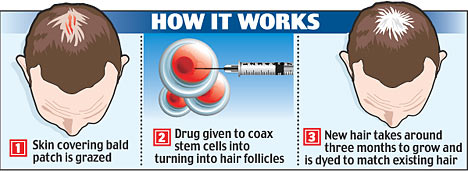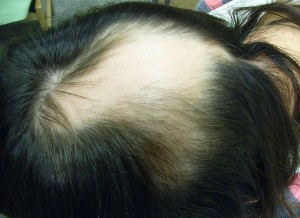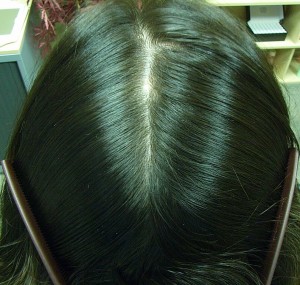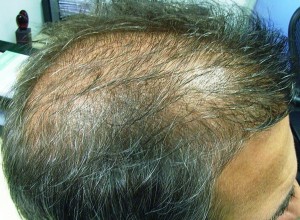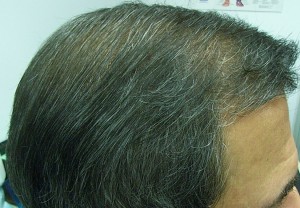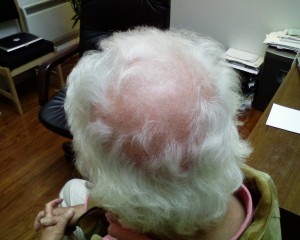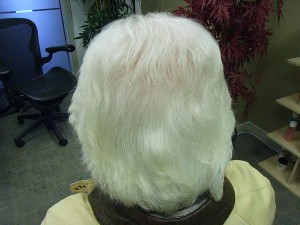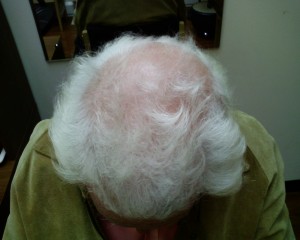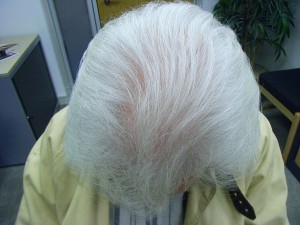15.01.2010
in Uncategorized

PROPECIA was developed to treat mild to moderate male pattern hair loss on the vertex (top of head) and anterior mid-scalp area (middle front of head) in MEN ONLY. There is not sufficient evidence that PROPECIA works for receding hairlines at the temples.
PROPECIA is for the treatment of male pattern hair loss in MEN ONLY and should NOT be used by women or children.
You should not use PROPECIA if you are allergic to finasteride or any of the ingredients in PROPECIA.
Women who are or may potentially be pregnant must not use PROPECIA and should not handle crushed or broken PROPECIA tablets because the active ingredient may cause abnormalities of a male baby’s sex organs. If a woman who is pregnant comes into contact with the active ingredient in PROPECIA, a doctor should be consulted. PROPECIA tablets are coated and will prevent contact with the active ingredient during normal handling, provided that the tablets are not broken or crushed.
Clinical studies showed that side effects were uncommon and did not affect most men.
In general use, the following side effects have been reported: allergic reactions including rash, itching, hives, and swelling of the lips and face; problems with ejaculation; breast tenderness and enlargement; and testicular pain. You should promptly report to your doctor any changes in your breasts such as lumps, pain, or nipple discharge. Tell your doctor about these or any other unusual side effects.
A small number of men had sexual side effects, with each occurring in less than 2% of men. These include less desire for sex, difficulty in achieving an erection, and a decrease in the amount of semen. These side effects went away in men who stopped taking PROPECIA because of them. In addition, these side effects decreased to 0.3% of men or less by the fifth year of treatment.
In 3 controlled clinical trials for PROPECIA of 12-month duration, 1.4% of patients who took PROPECIA (n=945) were discontinued due to adverse experiences that were considered to be possibly, probably, or definitely drug related. 1.6% of patients who took a sugar pill (placebo; n=934) were discontinued due to adverse experiences.
PROPECIA can affect a blood test called PSA (prostate-specific antigen) for the screening of prostate cancer. If you have a PSA test done, tell your doctor that you are taking PROPECIA.
In general use, the following side effects have been reported: allergic reactions including rash, itching, hives, and swelling of the lips and face; problems with ejaculation; breast tenderness and enlargement; and testicular pain. You should promptly report to your doctor any changes in your breasts such as lumps, pain, or nipple discharge. Tell your doctor promptly about these or any other side effects.
Know the facts. PROPECIA is available by prescription only, so the best thing to do is talk with your doctor.
Important Information About PROPECIA
PROPECIA was developed to treat mild to moderate male pattern hair loss on the vertex (top of head) and anterior mid-scalp area (middle front of head) in MEN ONLY. There is not sufficient evidence that PROPECIA works for receding hairlines at the temples.
PROPECIA is for the treatment of male pattern hair loss in MEN ONLY and should NOT be used by women or children.
Women who are or may potentially be pregnant must not use PROPECIA and should not handle crushed or broken PROPECIA tablets because the active ingredient may cause abnormalities of a male baby’s sex organs. If a woman who is pregnant comes into contact with the active ingredient in PROPECIA, a doctor should be consulted. PROPECIA tablets are coated and will prevent contact with the active ingredient during normal handling, provided that the tablets are not broken or crushed.
In clinical studies for PROPECIA, a small number of men experienced certain sexual side effects, such as less desire for sex, difficulty in achieving an erection, or a decrease in the amount of semen. Each of these side effects occurred in less than 2% of men and went away in men who stopped taking PROPECIA because of them.
You may need to take PROPECIA daily for 3 months or more before you see a benefit from taking PROPECIA. If PROPECIA has not worked for you within 12 months, further treatment is unlikely to be of benefit.
PROPECIA can only work over the long term if you continue taking it. If you stop taking PROPECIA, you will likely lose any hair you have gained within 12 months of stopping treatment.
Although results will vary, generally you will not be able to grow back all the hair you have lost.
Know the facts. PROPECIA is available by prescription only, so the best thing to do is talk with your doctor.
PROPECIA, PROPAK, and Helping make hair loss history are registered trademarks of Merck & Co., Inc.
MerckSource is a trademark of Merck & Co., Inc. Other brands mentioned are the trademarks of their respective owners and are not trademarks of Merck & Co., Inc.
20753468(2)-04/08-PRP
http://www.propecia.com/finasteride/propecia/consumer/possible-side-effects/
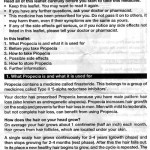
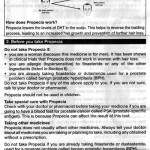
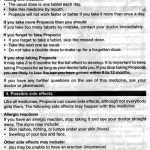
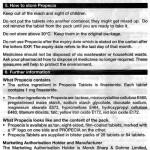
Do you have Hair Loss Problems, read our Hair Loss Help
